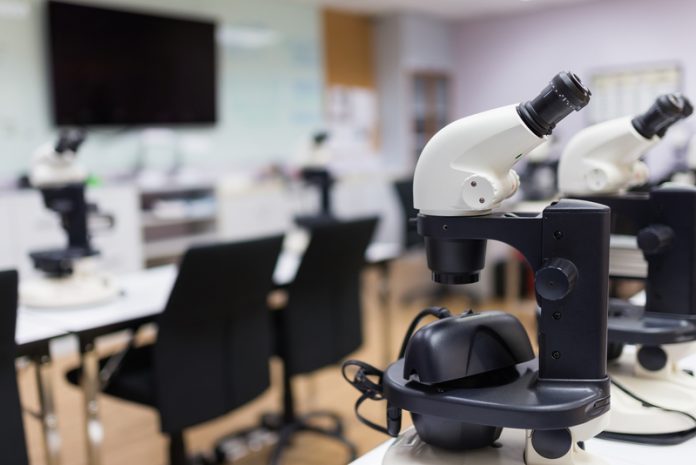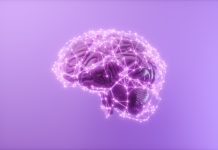Dr. Lisa Halvorson, U.S. National Institutes of Health discusses the importance of gynaecologic research to develop new treatments and keep women healthy
In 2012, the Eunice Kennedy Shriver National Institute of Child Health and Human Development (NICHD) established the Gynecologic Health and Disease Branch to serve as the epicenter of gynaecologic research at the National Institutes of Health (NIH). Gynaecologic disorders affect women’s quality of life in ways distinct from reproduction and infertility and, therefore, require an independent research focus and support. Here, Dr. Lisa Halvorson, Chief of the branch, answers Open Access Government’s questions on the importance of gynaecologic health and of research to advance our understanding of gynaecologic disorders.
What is gynaecologic health and why is it important?
Gynaecologic health includes the health, structure, and function of internal organs, including those in the pelvis, and external genitalia that allow for normal menstruation, sexual function, and reproduction without chronic or recurrent pain. Many disorders, although not fatal, can impact gynaecologic health. These include menstrual abnormalities, ovarian cysts, uterine fibroids, endometriosis, and pelvic floor disorders (pelvic organ prolapse, urinary incontinence, and faecal incontinence), to name a few. In addition, there are several gynaecologic pain syndromes, such as chronic pelvic pain, chronic pain in the area around the opening of the vagina (vulvodynia), pain associated with menstrual cycles (dysmenorrhea), and painful sexual intercourse (dyspareunia). Obstetric fistula, defined as a hole in the birth canal, and female genital cutting also are important.
Gynaecologic disorders are fairly common and have far-reaching health and societal impacts. For instance, the most common non-cancerous gynaecologic tumour in women is uterine fibroids, with a lifetime prevalence of 70 to 80%, of which 30% are symptomatic. Another disease, endometriosis, affects approximately 10% of reproductive-age women. Also, it is estimated that several million women in the United States suffer from vulvodynia alone, although the true prevalence of this and other gynaecologic pain syndromes remains unknown. Pelvic floor disorders affect almost 25% of U.S. women between ages 20 and 80 years. As the U.S. population ages, the number of women with pelvic floor disorders is expected to increase substantially. The detrimental health effects of gynaecologic disorders can range from abnormal uterine bleeding, pelvic pain, infertility, and sexual dysfunction to substantial psychosocial illness and limitations in daily activities. The financial burden of these conditions is also very high, with endometriosis and fibroids alone costing the United States billions of dollars every year in health care resources and lost work hours.
How important is research to develop new methods for prevention and diagnosis?
Despite the health and financial burdens of gynaecologic diseases, large gaps remain in our understanding of the key processes contributing to the development and progression of these disorders. Without ongoing research, the gaps will remain, leaving millions of women without evidence-based prevention methods, diagnosis, or treatment.
What key target areas comprise the focus of research in the NICHD Gynecologic Health and Disease Branch?
Current efforts aim to support research in selected gynaecologic areas that have traditionally been overlooked or underfunded, such as socioeconomic, racial, and ethnic disparities in reproductive health outcomes. Although NICHD funding is allocated for studies of fibroids, endometriosis, pelvic floor disorders, and gynaecologic pain, our goal is to expand our portfolio to address a wider range of problems.
Over the past year, branch research has focused on the following:
- Supporting longitudinal studies to better understand the natural history of gynaecologic disorders, particularly in adolescents, to help identify risk factors, possible prevention strategies, and treatments;
- Fostering partnerships with experts in relevant clinical and basic science fields (e.g., neurobiology, muscle biology, cell biology, and immunology) to enhance knowledge and resource-sharing across disciplines;
- Applying powerful “-omics” approaches (e.g., genomics, epigenomics, and proteomics) to gynaecologic conditions;
- Investigating stem cells as a cause and potential therapy for gynaecologic disorders, from studies of their role in causing such disorders to projects that utilise stem-cell based therapies to treat the disorders;
- Developing new, non-hormonal pharmacologic treatments to improve gynaecologic health;
- Applying novel imaging methods and biomarkers to gynaecologic disorders.
How does your branch support such research and help raise awareness for gynaecologic health?
The NICHD Gynaecologic Health and Disease Branch funds basic, translational, and clinical research to investigate gynaecologic diseases. We also identify research needs and develop grant opportunities to address new or underdeveloped areas of investigation. To ensure that we have our fingers on the pulse of the various fields within gynaecologic health, branch staff participate in national and international meetings and maintain ongoing communication with the scientific community, advocacy organisations, related government agencies, and the general public.
These contacts enable us to distribute information related to research aims, funding opportunities, and study results to better convey the importance of gynaecologic health. The branch also supports research training and career development programs to create a future of excellence in women’s health research. In short, the branch serves as a link between the scientific community, the public, health practitioners, and different levels of government with the ultimate goal of advancing gynaecologic research and health.
Dr. Lisa Halvorson
Branch Chief
Gynecologic Health and Disease Branch, Eunice Kennedy Shriver National Institute of Child Health and Human Development, National Institutes of Health
lisa.halvorson@nih.gov
www.nichd.nih.gov/about/org/der/branches/ghdb/Pages/overview.aspx











